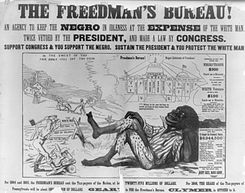President Andrew Johnson impeached
 The U.S. House of Representatives votes 11 articles of impeachment against President Andrew Johnson, nine of which cite Johnson’s removal of Secretary of War Edwin M. Stanton, a violation of the Tenure of Office Act. The House vote made President Johnson the first president to be impeached in U.S. history.
The U.S. House of Representatives votes 11 articles of impeachment against President Andrew Johnson, nine of which cite Johnson’s removal of Secretary of War Edwin M. Stanton, a violation of the Tenure of Office Act. The House vote made President Johnson the first president to be impeached in U.S. history.
At the outbreak of the Civil War in 1861, Andrew Johnson, a senator from Tennessee, was the only U.S. senator from a seceding state who remained loyal to the Union. In 1862, President Abraham Lincoln appointed him military governor of Tennessee, and in 1864 he was elected vice president of the United States. Sworn in as president after Lincoln’s assassination in April 1865, President Johnson enacted a lenient Reconstruction policy for the defeated South, including almost total amnesty to ex-Confederates, a program of rapid restoration of U.S.-state status for the seceded states, and the approval of new, local Southern governments, which were able to legislate “Black Codes” that preserved the system of slavery in all but its name.
What was President Johnson’s plan for reconstruction?
 The Republican-dominated Congress greatly opposed Johnson’s Reconstruction program and in March 1867 passed the Tenure of Office Act over the president’s veto. The bill prohibited the president from removing officials confirmed by the Senate without senatorial approval and was designed to shield members of Johnson’s Cabinet like Secretary of
The Republican-dominated Congress greatly opposed Johnson’s Reconstruction program and in March 1867 passed the Tenure of Office Act over the president’s veto. The bill prohibited the president from removing officials confirmed by the Senate without senatorial approval and was designed to shield members of Johnson’s Cabinet like Secretary of  War Edwin M. Stanton, who had been a leading Republican radical in the Lincoln administration. In the fall of 1867, President Johnson attempted to test the constitutionality of the act by replacing Stanton with General Ulysses S. Grant. However, the U.S. Supreme Court refused to rule on the case, and Grant turned the office back to Stanton after the Senate passed a measure in protest of the dismissal.
War Edwin M. Stanton, who had been a leading Republican radical in the Lincoln administration. In the fall of 1867, President Johnson attempted to test the constitutionality of the act by replacing Stanton with General Ulysses S. Grant. However, the U.S. Supreme Court refused to rule on the case, and Grant turned the office back to Stanton after the Senate passed a measure in protest of the dismissal.
On February 21, 1868, Johnson decided to rid himself of Stanton once and for all and appointed General Lorenzo Thomas, an individual far less favorable to the Congress than Grant, as secretary of war. Stanton refused to yield, barricading himself in his office, and the House of Representatives, which had already discussed impeachment after Johnson’s first dismissal of Stanton, initiated formal impeachment proceedings against the president. On February 24, Johnson was impeached, and on March 13 his impeachment trial began in the Senate under the direction of U.S. Supreme Court Chief Justice Salmon P. Chase. The trial ended on May 26 with Johnson’s opponents narrowly failing to achieve the two-thirds majority necessary to convict him.

